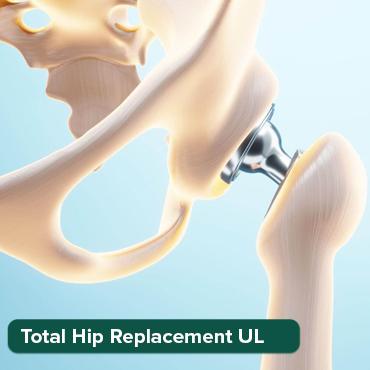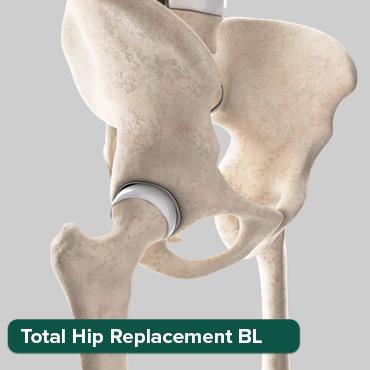
Best Exercises to Regain Strength After Liver Transplant — Healthtrip Approved
07 Aug, 2025
 Healthtrip
Healthtrip- The Importance of Exercise After Liver Transplant
- Where to Exercise Safely After Liver Transplant < li>Who Can Benefit from Exercise Post-Transplant?
- How to Start Exercising After Liver Transplant
- Examples of Recommended Exercises & Hospitals like Fortis Escorts Heart Institute, Max Healthcare Saket, and Yanhee International Hospital
- Guidelines for a Personalized Exercise Plan
- Conclusion
Understanding Post-Transplant Weakness
Weakness after a liver transplant is often multifaceted, stemming from a combination of factors. The surgery itself is a significant physical stressor, leading to muscle loss and fatigue. Immunosuppressant medications, crucial for preventing organ rejection, can also contribute to muscle weakness and fatigue as a side effect. Prolonged periods of inactivity before and after the transplant can further exacerbate muscle atrophy. Nutritional deficiencies may also play a role, as the body recovers and adjusts to its new liver. Understanding these underlying causes is essential for developing a targeted exercise plan. It's akin to figuring out why your car won't start – you need to know if it's the battery, the fuel, or something else entirely. By addressing these factors, you can create a holistic approach to regaining strength, combining exercise with proper nutrition and medication management. Healthtrip can assist you in finding the right specialists to address these needs, from dieticians to physical therapists, ensuring a comprehensive recovery plan.
Transform Your Beauty, Boost Your Confidence
Find the right cosmetic procedure for your needs.

We specialize in a wide range of cosmetic procedures

The Importance of a Gradual Approach
Jumping headfirst into an intense workout routine after a liver transplant is like trying to run a marathon without any training – it's a recipe for disaster. A gradual approach is absolutely crucial to avoid overexertion, injury, and potential complications. Start with gentle exercises and progressively increase the intensity and duration as your body adapts. Think of it as gently coaxing your muscles back to life, rather than shocking them into submission. Begin with short walks around your home or neighborhood, gradually increasing the distance and pace. Light stretching and range-of-motion exercises can also help improve flexibility and reduce stiffness. Listen to your body and don't push yourself too hard, especially in the initial weeks and months after the transplant. Rest when you need to, and don't hesitate to modify exercises if you experience any pain or discomfort. Facilities like NMC Specialty Hospital, Al Nahda, Dubai, offer excellent rehabilitation services that emphasize a gradual and personalized approach to recovery. Remember, slow and steady wins the race, especially when it comes to regaining strength after a major surgery.
Recommended Exercises
Low-Impact Aerobic Exercises
Low-impact aerobic exercises are fantastic for improving cardiovascular health without putting excessive stress on your joints and muscles. Walking, swimming, and cycling are excellent choices. Walking is a simple yet effective way to increase your stamina and build lower body strength. Swimming is particularly gentle on the body, as the water provides buoyancy and reduces the impact on your joints, as the professionals at Quironsalud Hospital Murcia will attest to. Cycling, whether outdoors or on a stationary bike, can improve leg strength and endurance. Start with short sessions of 10-15 minutes and gradually increase the duration to 30 minutes or more, several times a week. Healthtrip can connect you with fitness centers and trainers who specialize in working with individuals recovering from medical procedures, ensuring you have the support you need to succeed. Remember, it's about progress, not perfection.
Strength Training Exercises
Strength training exercises are essential for rebuilding muscle mass and improving overall strength. Focus on exercises that target major muscle groups, such as your legs, arms, chest, and back. Bodyweight exercises like squats, lunges, push-ups (modified on your knees if needed), and planks are a great starting point. You can also use light weights or resistance bands as you progress. Aim for 2-3 strength training sessions per week, with rest days in between to allow your muscles to recover. Proper form is crucial to prevent injuries, so consider working with a physical therapist or certified trainer who can guide you through the exercises and ensure you're using correct technique. Hospitals like Fortis Memorial Research Institute, Gurgaon, have specialist teams that can advise on bespoke strength training routines. Think of each repetition as a small victory, a step closer to regaining your former strength.
Flexibility and Balance Exercises
Flexibility and balance exercises are often overlooked, but they're incredibly important for improving mobility, preventing falls, and enhancing overall well-being. Stretching exercises like hamstring stretches, calf stretches, and shoulder stretches can help improve flexibility and reduce muscle stiffness. Yoga and Pilates are also excellent options for improving flexibility, balance, and core strength. Balance exercises, such as standing on one leg or using a balance board, can help improve stability and coordination. Incorporate these exercises into your routine several times a week. Remember, flexibility and balance are the unsung heroes of physical fitness, and they play a vital role in helping you regain your independence and confidence after a liver transplant. Consider seeking guidance from professionals at Yanhee International Hospital who emphasize holistic recovery approaches.
Listening to Your Body
Perhaps the most important piece of advice is to listen to your body. Your body is your best guide, and it will tell you when you're pushing yourself too hard. Pay attention to any pain, discomfort, or excessive fatigue. Don't ignore these signals, and don't hesitate to modify your exercise routine or take a break when needed. It's okay to have good days and bad days – recovery is not a linear process. Some days you may feel energized and ready to tackle a challenging workout, while other days you may need to take it easy. Be patient with yourself and celebrate your progress, no matter how small. Remember, this is a marathon, not a sprint. Healthtrip is here to provide support and resources throughout your journey, connecting you with healthcare professionals who understand the unique challenges of post-transplant recovery. With patience, perseverance, and the right guidance, you can regain your strength and embrace a healthier, more fulfilling life.
Most popular procedures in India
Total Hip Replacemen
Upto 80% off
90% Rated
Satisfactory

Total Hip Replacemen
Upto 80% off
90% Rated
Satisfactory

Total Hip Replacemen
Upto 80% off
90% Rated
Satisfactory

ASD Closure
Upto 80% off
90% Rated
Satisfactory

Liver Transplant Sur
Upto 80% off
90% Rated
Satisfactory

The Importance of Exercise After Liver Transplant
Undergoing a liver transplant is a monumental event, a second chance at life that deserves to be cherished and nurtured. The journey doesn't end with the surgery; in many ways, it's just the beginning of a new chapter focused on wellness and long-term health. One of the most vital aspects of this new chapter is incorporating regular exercise into your routine. Think of exercise not as a chore, but as an investment in your revitalized liver and overall well-being. It's about empowering yourself, taking control of your health, and maximizing the benefits of your transplant. A sedentary lifestyle can unfortunately lead to a cascade of issues, including weight gain, muscle weakness, cardiovascular problems, and increased risk of complications. Exercise is a powerful antidote. It helps maintain a healthy weight, strengthens your muscles and bones, improves cardiovascular health, boosts your immune system, and can even elevate your mood. All these benefits are crucial for your long-term survival and quality of life after a liver transplant. It's a holistic approach to healing, addressing both the physical and mental aspects of recovery.
The benefits of exercise post-transplant extend far beyond the purely physical. Regular physical activity plays a crucial role in managing some of the side effects of immunosuppressant medications, which are essential for preventing organ rejection. These medications can sometimes lead to weight gain, high blood pressure, and increased cholesterol levels. Exercise can help counteract these effects, helping you maintain a healthier profile. Moreover, exercise has a remarkably positive impact on your mental and emotional well-being. The transplant process can be emotionally taxing, filled with anxiety and uncertainty. Exercise releases endorphins, natural mood boosters that can help alleviate stress, combat depression, and improve your overall sense of well-being. It provides a sense of accomplishment and control, further empowering you in your recovery journey. Consider exercise as a cornerstone of your post-transplant care. Remember to consult with your transplant team at hospitals like Fortis Memorial Research Institute, Gurgaon or Max Healthcare Saket to create a personalized exercise plan that fits your individual needs and limitations. They can guide you in selecting the right types of activities, setting realistic goals, and monitoring your progress to ensure you're exercising safely and effectively, maximizing the benefits for your renewed health.
Where to Exercise Safely After Liver Transplant
Embarking on an exercise journey after a liver transplant requires careful consideration of your surroundings. Safety is paramount, and choosing the right environment is crucial for a positive and injury-free experience. Initially, especially in the early stages of recovery, exercising at home might be the most comfortable and convenient option. You have complete control over the environment, minimizing exposure to potential infections and allowing you to exercise at your own pace. Simple activities like walking around the house, gentle stretching, or using light weights can be easily incorporated into your daily routine. As your strength and stamina improve, and with the guidance of your healthcare providers, you can gradually explore other options.
Once you feel ready to venture outside, consider indoor, climate-controlled environments where you can avoid extreme temperatures and air pollution. A gym or a community center offers a wide range of exercise equipment and structured classes suitable for various fitness levels. Ensure the facility is clean and well-maintained to minimize the risk of infection. Another great option is a rehabilitation center specializing in post-transplant care. These centers provide supervised exercise programs tailored to your specific needs and limitations, often under the guidance of physical therapists and other healthcare professionals such as those at Yanhee International Hospital. Outdoor activities can also be enjoyable and beneficial, but it's essential to take precautions. Choose safe walking or cycling routes with smooth surfaces and minimal traffic. Avoid exercising during peak hours when air pollution levels are high. Dress appropriately for the weather, and always stay hydrated. Remember to listen to your body and stop if you experience any pain or discomfort. Sun protection is also crucial, as some immunosuppressant medications can increase your sensitivity to the sun. Wear sunscreen, a hat, and protective clothing when exercising outdoors. Regardless of the location, it is always recommended to be accompanied by a friend or family member who can provide support and assistance if needed. This is especially important in the initial phases of your exercise program. Don't hesitate to seek guidance from your transplant team at hospitals like Fortis Shalimar Bagh or Saudi German Hospital Cairo regarding the most suitable exercise environment for your condition and recovery stage. Your health and safety should always be the top priority.
Who Can Benefit from Exercise Post-Transplant?
The simple answer? Virtually everyone who has undergone a liver transplant can benefit from incorporating exercise into their post-transplant care plan. It's not just for elite athletes or fitness fanatics; it's for anyone seeking to improve their health, well-being, and overall quality of life after this life-changing procedure. Regardless of your age, pre-transplant fitness level, or current health status, exercise can play a vital role in your recovery and long-term success. However, it's crucial to emphasize the importance of individualization. The type, intensity, and duration of exercise should be tailored to your specific needs, limitations, and medical condition. This is where the expertise of your healthcare team, including your transplant physicians, nurses, and physical therapists, becomes invaluable. They can assess your overall health, evaluate any potential risks or contraindications, and create a personalized exercise plan that is both safe and effective. Even if you have pre-existing conditions like arthritis, diabetes, or heart disease, exercise can still be beneficial, but it's essential to work closely with your healthcare providers to modify the program accordingly.
Individuals who were physically active before their transplant often find it easier to resume exercise after surgery, but it's vital to start slowly and gradually increase the intensity and duration of their workouts. Those who were less active before the transplant may need to take a more gradual approach, beginning with gentle activities like walking or stretching and progressively building their strength and stamina. People experiencing fatigue, muscle weakness, or other side effects from immunosuppressant medications can also benefit significantly from exercise. Regular physical activity can help combat these side effects, improve energy levels, and enhance overall well-being. Moreover, exercise can be particularly helpful for individuals who are struggling with anxiety, depression, or other emotional challenges related to the transplant process. The mood-boosting effects of exercise can provide a much-needed sense of relief and improve their overall mental and emotional state. Ultimately, exercise is a powerful tool for empowering patients in their recovery journey. It provides a sense of control, promotes independence, and fosters a positive outlook on life. Consulting with transplant centers such as Vejthani Hospital or Bangkok Hospital to determine an appropriate exercise regimen would be the first step after your transplant.
Also Read:
How to Start Exercising After Liver Transplant
Embarking on an exercise journey after a liver transplant requires a thoughtful and incremental approach. It's not about diving headfirst into intense workouts; it's more like dipping your toes in the water and gradually getting comfortable. Before you even think about lacing up your sneakers, consult your transplant team. They're the experts who know your specific health profile and can provide tailored advice. They'll assess your overall fitness, any potential complications, and medication side effects that might influence your exercise plan. This initial consultation is crucial to setting realistic goals and preventing any unforeseen setbacks. Remember, patience is key. Don't expect to regain your pre-transplant fitness level overnight. Start with gentle activities like walking, stretching, or light yoga. Listen to your body, and don't push yourself too hard, especially in the early stages. Gradually increase the intensity and duration of your workouts as you feel stronger and more confident. Consider working with a physical therapist or exercise specialist experienced in post-transplant care. They can design a personalized exercise program that addresses your specific needs and limitations. They'll also teach you proper techniques to prevent injuries and maximize your results. Remember, this isn't just about physical fitness; it's about reclaiming your life and rediscovering the joy of movement. So, take it one step at a time, celebrate your progress, and enjoy the journey.
Also Read:
Examples of Recommended Exercises & Hospitals like Fortis Escorts Heart Institute, Max Healthcare Saket, and Yanhee International Hospital
When it comes to exercise after a liver transplant, variety is truly the spice of life, and there's a whole buffet of options to choose from! Walking, that simple yet powerful activity, is an excellent starting point. It's gentle on the joints, improves cardiovascular health, and boosts your mood. Aim for at least 30 minutes of brisk walking most days of the week. If you're feeling adventurous, try swimming. The buoyancy of water reduces stress on your joints, making it a fantastic choice if you have any aches or pains. Water aerobics can also add a fun twist. Strength training is another crucial component of a well-rounded exercise program. It helps build muscle mass, which is often lost after a transplant. Use light weights or resistance bands to start, focusing on proper form. Consider exercises like bicep curls, squats, and lunges. Yoga and Pilates are excellent for improving flexibility, balance, and core strength. They can also help reduce stress and promote relaxation. Look for classes specifically designed for beginners or those with limited mobility. Always listen to your body and stop if you feel any pain or discomfort. Several hospitals and rehabilitation centers specialize in post-transplant care. Fortis Escorts Heart Institute offers comprehensive cardiac rehabilitation programs that can be adapted for liver transplant patients. Max Healthcare Saket provides a wide range of physical therapy services, including exercise programs tailored to individual needs. Yanhee International Hospital in Thailand is also known for its rehabilitation services and holistic approach to post-transplant care. Remember to consult with your healthcare team to determine the most appropriate exercises for your specific condition and fitness level. Healthtrip can assist in finding the right medical facility and connecting you with experienced professionals to guide you on your post-transplant fitness journey, ensuring your exercise plan aligns with your overall health and recovery goals.
Guidelines for a Personalized Exercise Plan
Crafting a personalized exercise plan after a liver transplant isn't just about picking exercises you enjoy; it is a holistic endeavor that requires careful consideration and collaboration with your healthcare team. It all starts with a thorough assessment. Your doctor or physical therapist will evaluate your current fitness level, taking into account your medical history, any existing health conditions, and the medications you're taking. This assessment will help them identify any potential limitations or risks. Setting realistic goals is key to staying motivated and preventing discouragement. Don't aim to run a marathon right away; focus on small, achievable milestones, such as walking for 15 minutes without fatigue or lifting a light weight without pain. As you progress, you can gradually increase the intensity and duration of your workouts. Your exercise plan should include a variety of activities, such as cardiovascular exercises, strength training, and flexibility exercises. This will help you improve your overall fitness and prevent boredom. Cardiovascular exercises, like walking, swimming, or cycling, should be performed at a moderate intensity for at least 30 minutes most days of the week. Strength training should be done 2-3 times per week, focusing on major muscle groups. Flexibility exercises, like stretching or yoga, should be performed daily to improve range of motion. Remember to warm up before each workout and cool down afterward. This will help prevent injuries and improve your performance. Listen to your body and don't push yourself too hard, especially in the early stages. Rest and recovery are just as important as exercise. Aim for at least 7-8 hours of sleep per night, and take rest days when needed. Stay hydrated by drinking plenty of water throughout the day. Regular monitoring and adjustments are essential to ensure that your exercise plan remains safe and effective. Keep track of your progress, and communicate any concerns or changes in your health to your doctor or physical therapist. They may need to adjust your plan based on your individual needs and response to exercise. Healthtrip can connect you with experienced healthcare professionals who can help you develop a personalized exercise plan that aligns with your specific goals and circumstances, ensuring a safe and successful recovery journey.
Also Read:
Conclusion
Embarking on a fitness journey post-liver transplant is undeniably a significant, life-affirming step. It's more than just a way to regain physical strength; it’s about reclaiming your vitality, your independence, and your joy in life. The road to recovery may have its bumps, but with a well-thought-out exercise plan and the unwavering support of your healthcare team, you can navigate it with confidence and grace. Remember, this isn't a race; it's a marathon. There will be days when you feel like you're on top of the world and others when you need to take a step back. That's perfectly normal. The key is to listen to your body, stay patient, and celebrate every milestone along the way. Exercise isn't just about physical benefits; it's also a powerful tool for improving your mental and emotional well-being. It can help reduce stress, boost your mood, and improve your sleep. It can also provide a sense of accomplishment and control in a situation where you may feel like you have little of either. Healthtrip is here to support you on your journey to optimal health and wellness after your liver transplant. We can connect you with top-notch medical facilities like Fortis Escorts Heart Institute, Max Healthcare Saket, and Yanhee International Hospital, as well as experienced healthcare professionals who can guide you every step of the way. From developing a personalized exercise plan to providing ongoing support and encouragement, we're committed to helping you live your best life after transplant. So, take a deep breath, lace up your shoes, and get ready to rediscover the amazing potential of your body and mind. Your health trip starts now!
Wellness Treatments
Give yourself the time to relax
Lowest Prices Guaranteed!

Lowest Prices Guaranteed!







